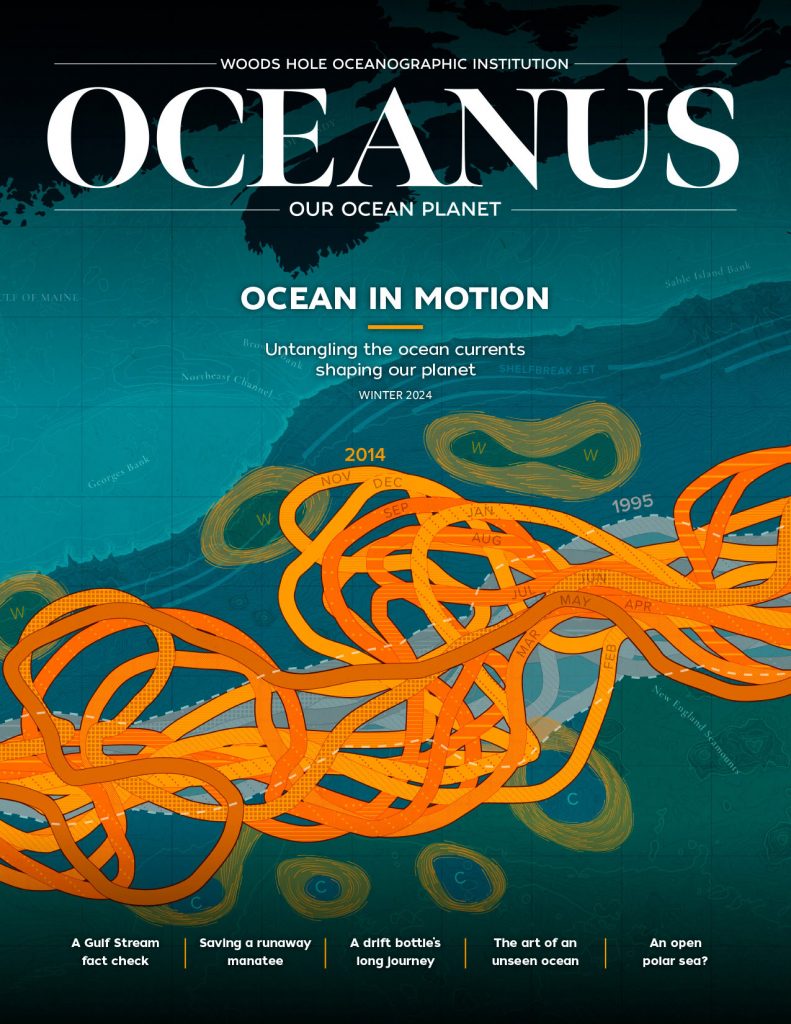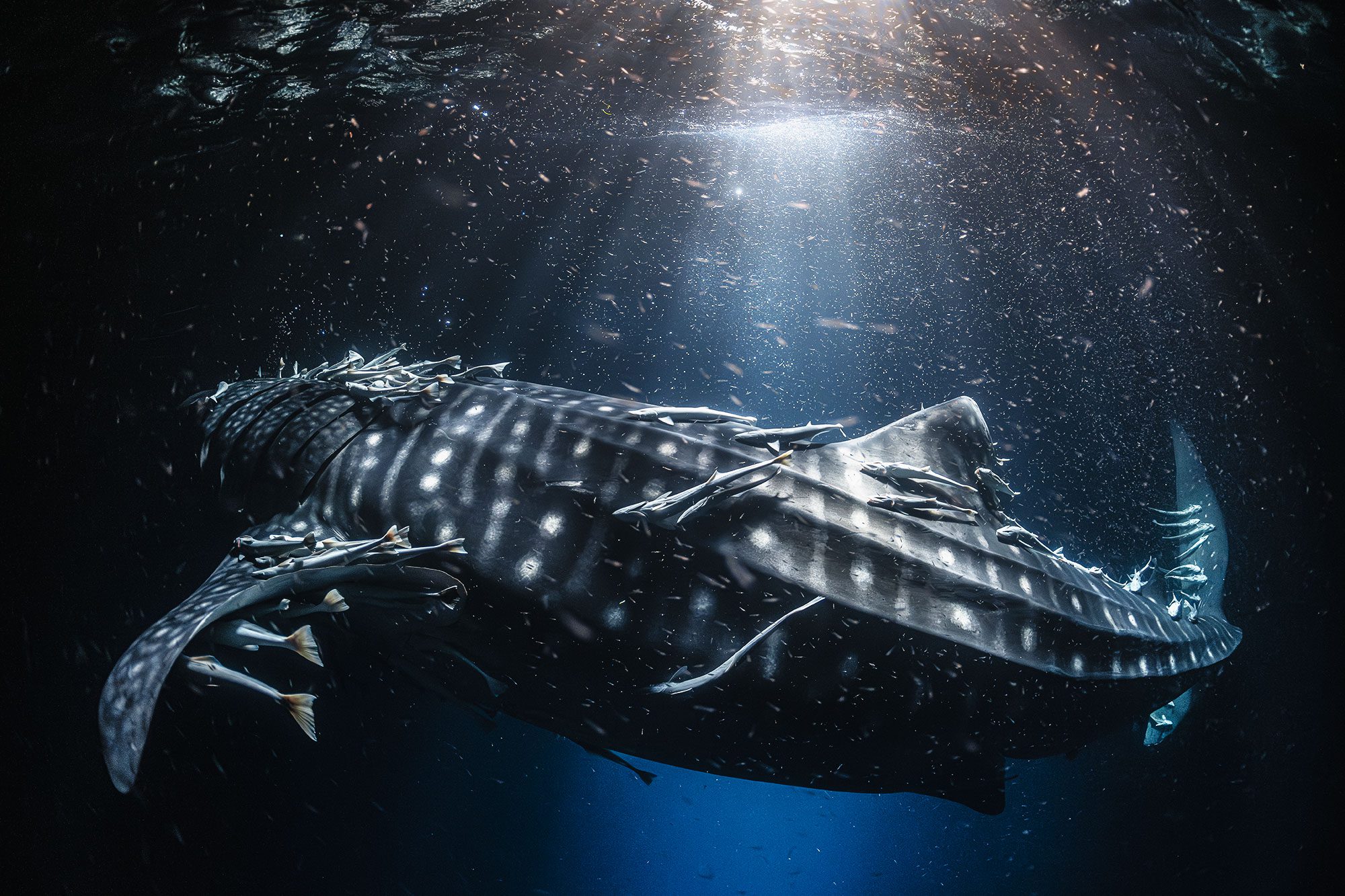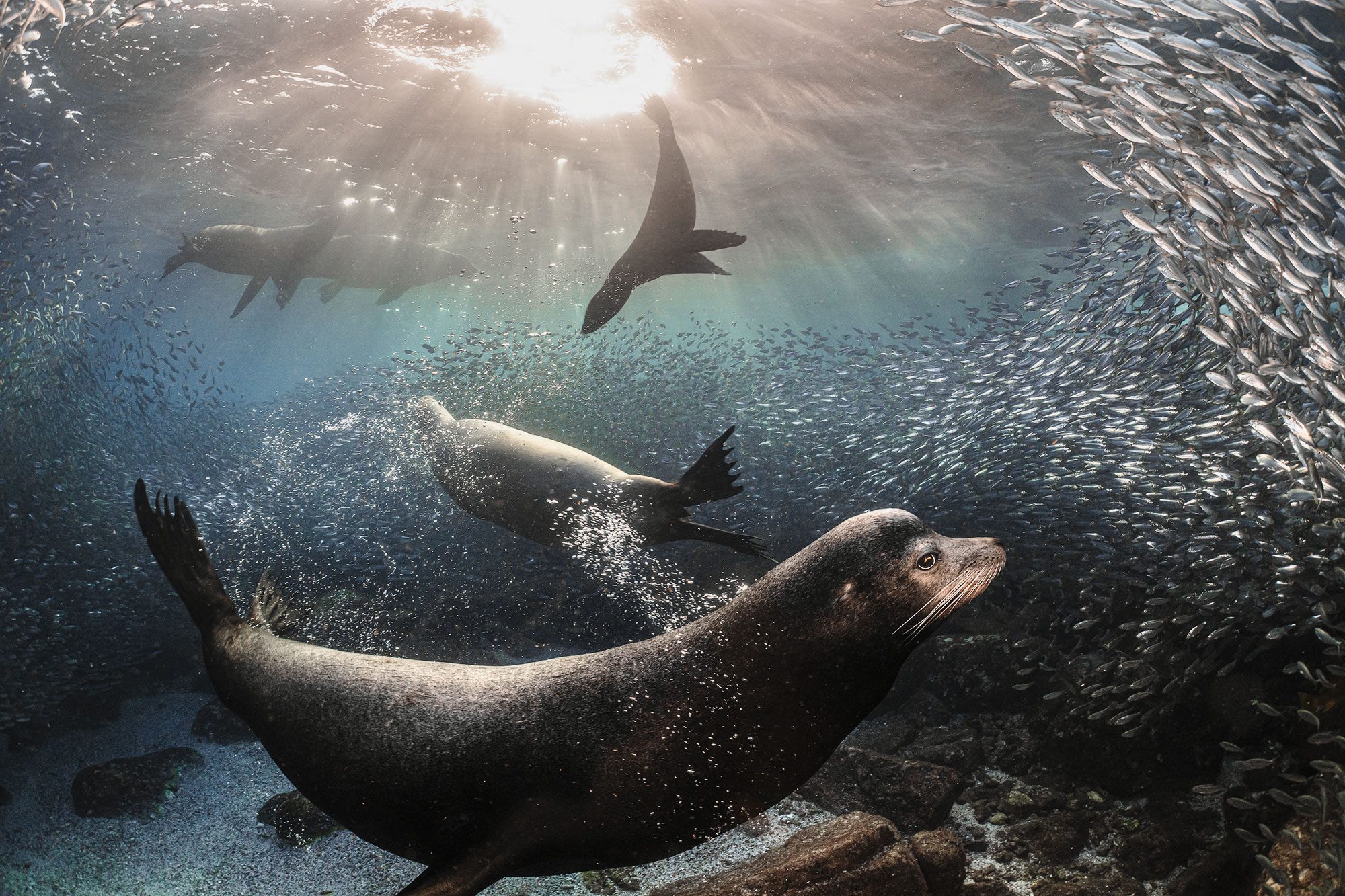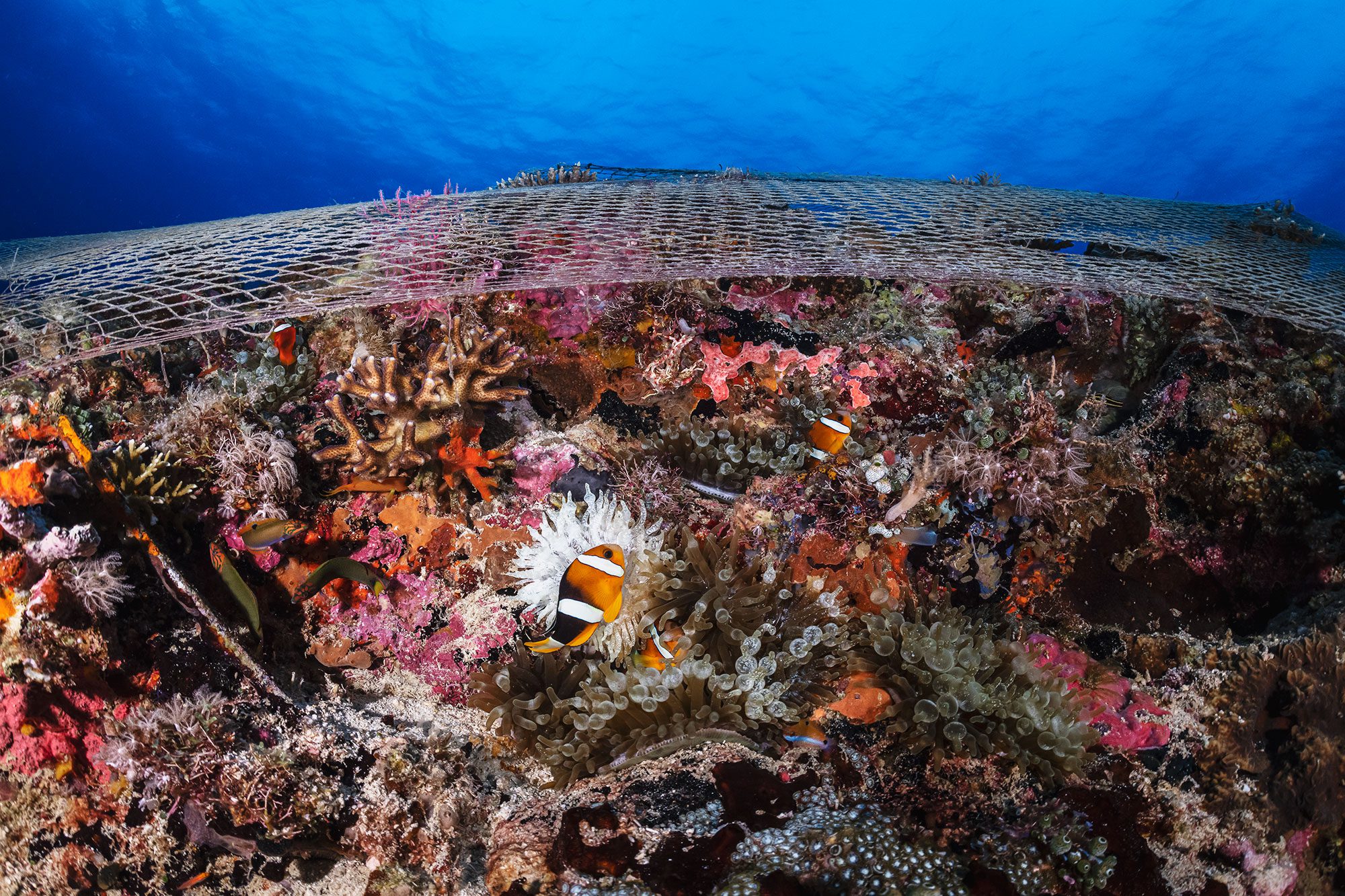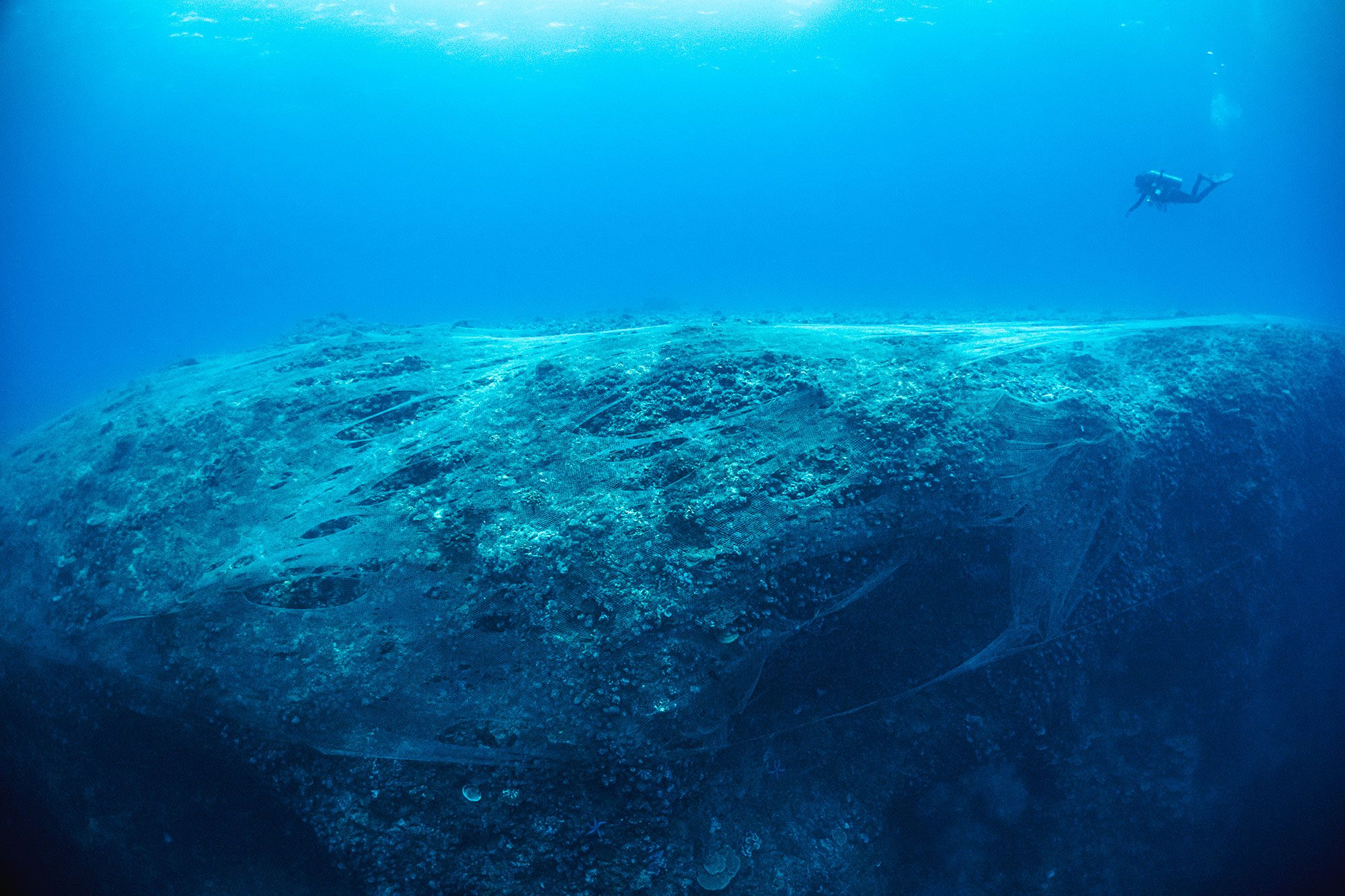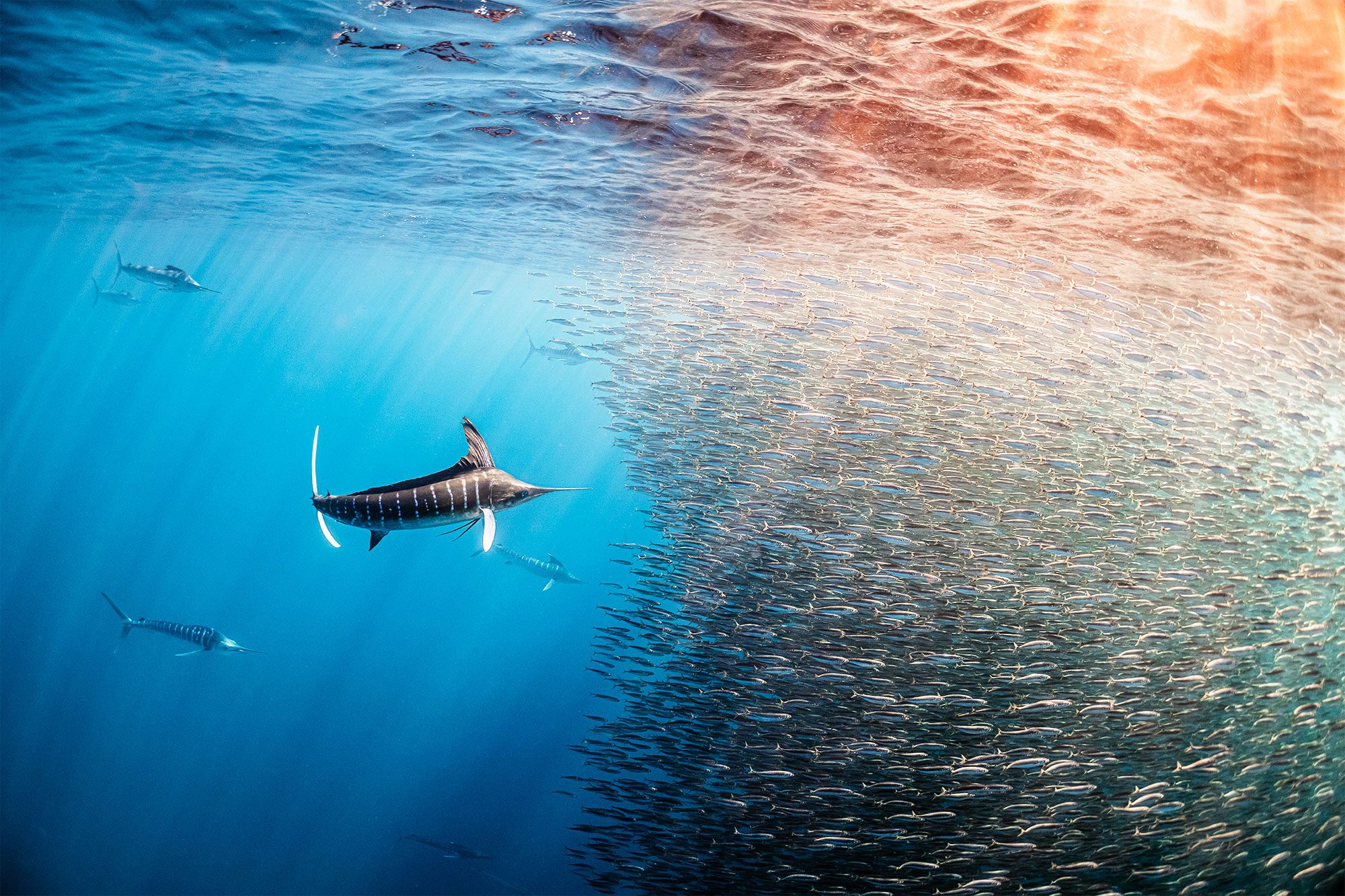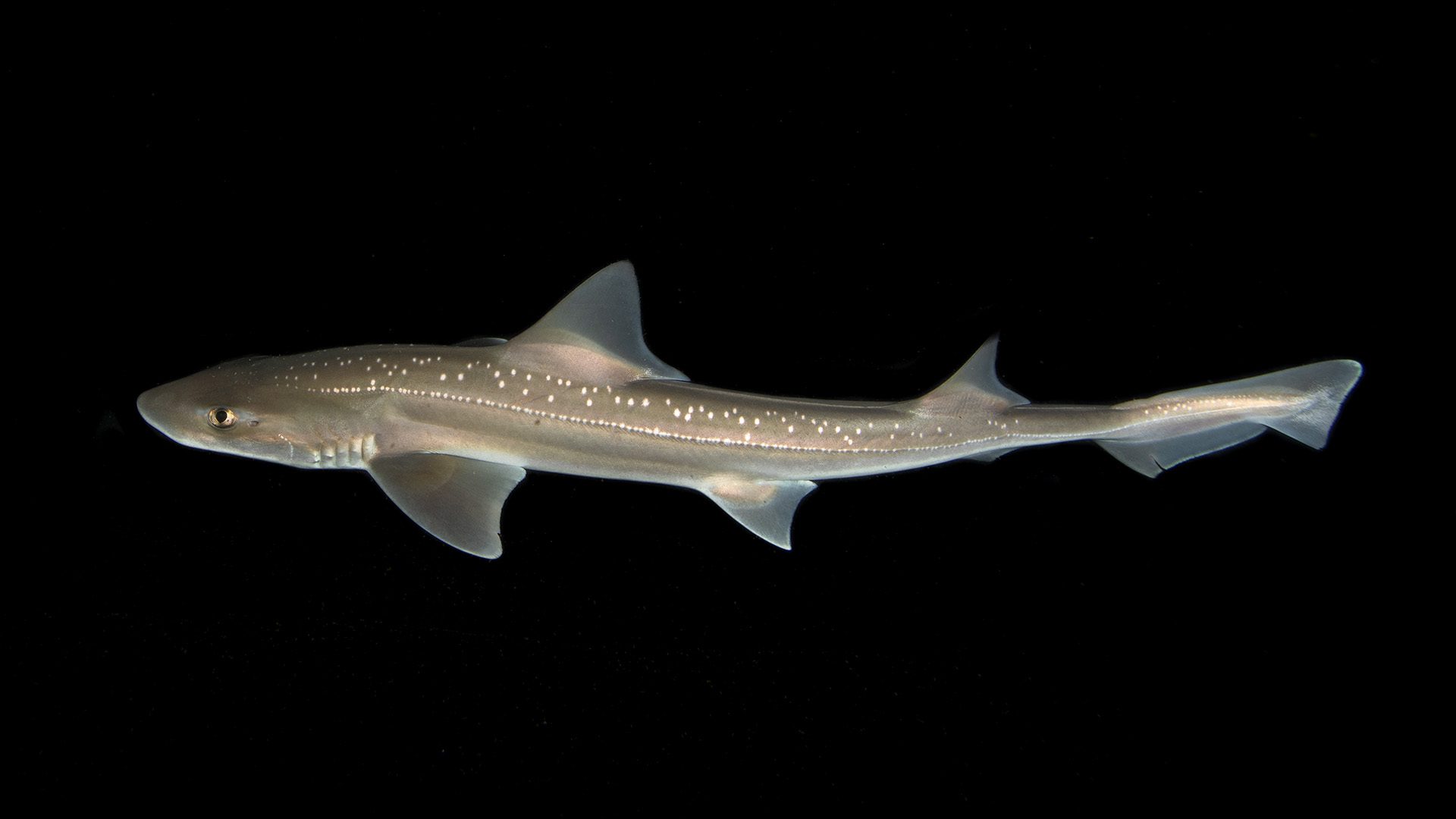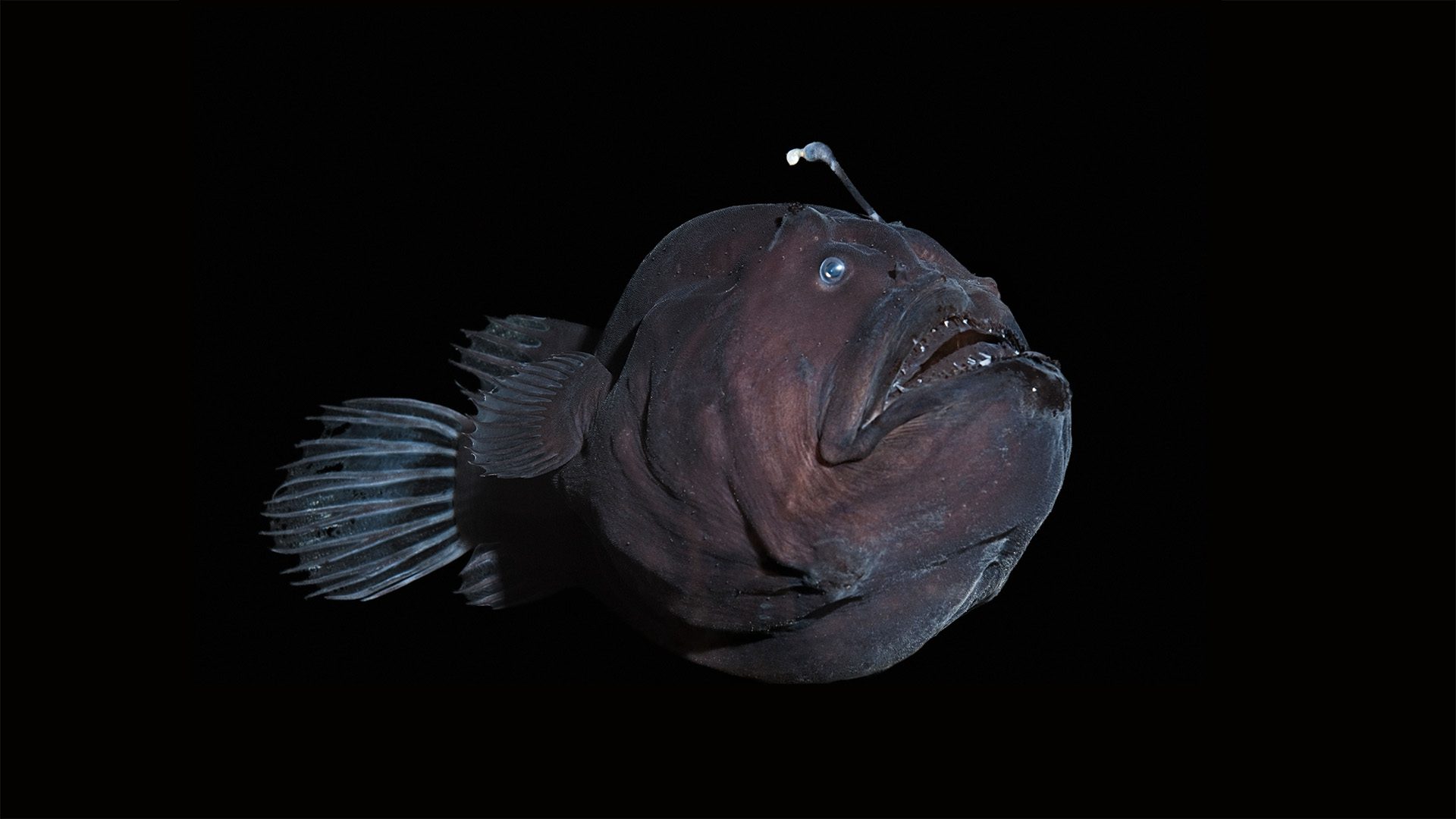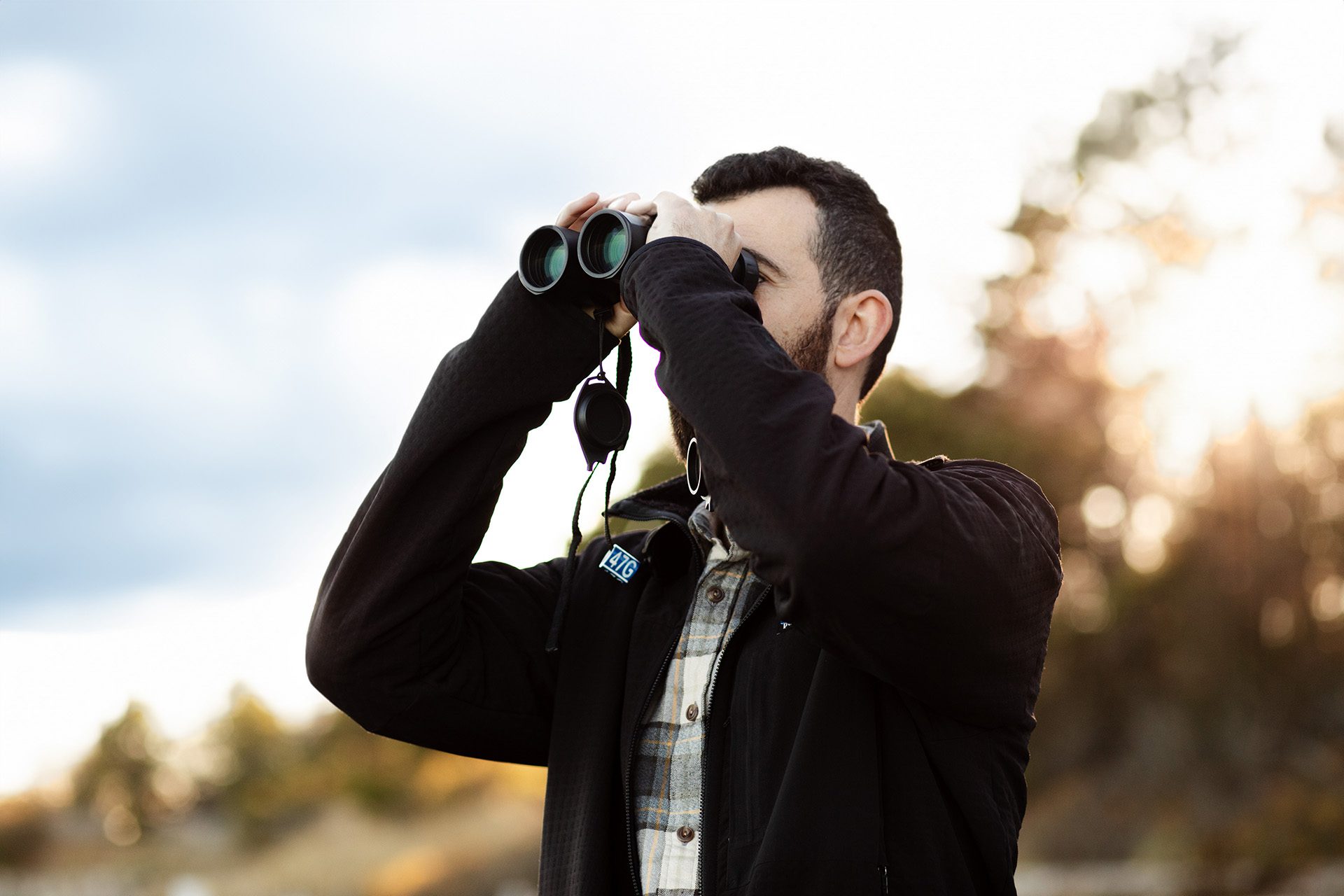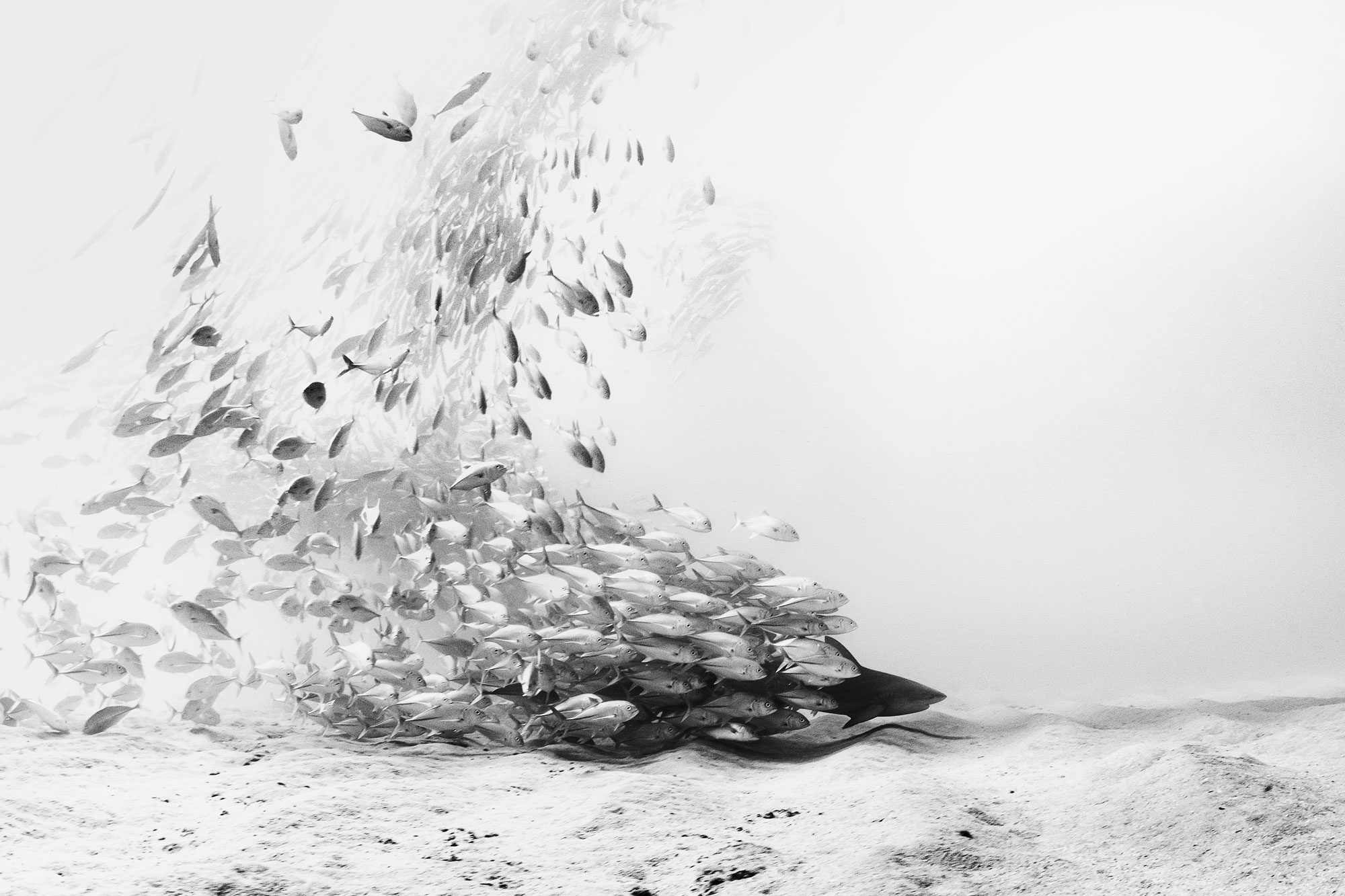
A cascade of life
The power of conservation, as seen through the lens of award-winning ocean photographer Henley Spiers
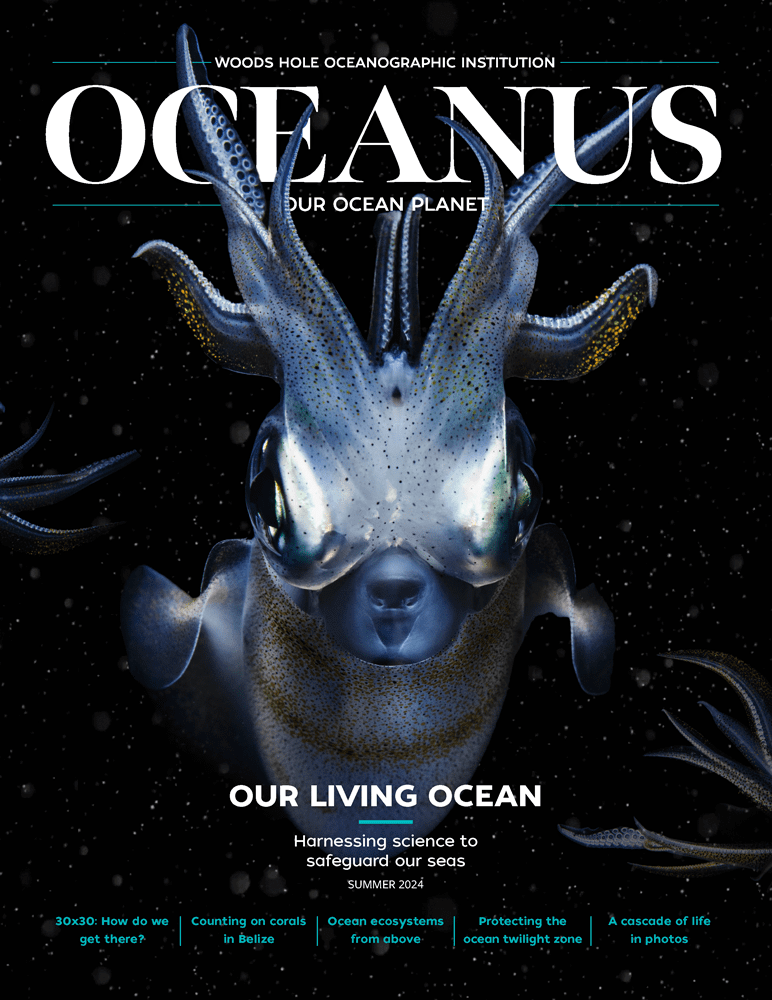 This article printed in Oceanus Summer 2024
This article printed in Oceanus Summer 2024
Estimated reading time: 3 minutes
When it comes to telling ocean conservation stories, science provides the foundation, but photography brings them to life. That’s the perspective that conservationist and award-winning photographer Henley Spiers brings to capturing the underwater world.
“When you dive in a place with a really successful marine protected area, you notice the difference right away,” Spiers says. “You can see a fully intact ecosystem from top to bottom. There are healthy corals, both shallow and deep. There are fish, and sharks, and everything else that is supposed to be there. You don’t need someone to tell you that life is more abundant, because you can see it.”
Here, Spiers takes us to places where ocean life is flourishing under protection or local management and to regions where it is under threat. To see more of Henley Spiers’ work, visit henleyspiers.com.

Bull shark among jacks
Cabo Pulmo National Park, Baja California Sur, Mexico
A shoal of bigeye trevally (Caranx sexfasciatus) swarms a bull shark (Carcharhinus leucas) in Cabo Pulmo National Park. Cabo Pulmo gained protection when residents of a small fishing village—numbering fewer than 200 people—responded to the overfishing and destruction of their local ecosystem. It was protected in 1995 and made a national park in 2000. Since then, the community has enforced a 100%-no-take zone within the 27-square-mile (~70-square-kilometer) park, fought off large coastal developments, and pioneered a sustainable tourism industry to share the bounty of their reef. Fifteen years after the area was protected, a study found that the total fish biomass had increased by 463%.
Whaleshark by night
Kolhumadulu Atoll, Maldives
A juvenile whale shark (Rhincodon typus) filter feeds near Kolhumadulu Atoll, a ring of 66 islands in the southernmost part of the Maldives. While this site is not within a marine protected area, this image represents cooperation between sustainable fisheries and local tourism. The shark is illuminated by the strong lights that Maldivian fishers shine into the night sea to attract baitfish used for catching skipjack tuna by pole and line. This traditional method does not harm nearby whale sharks, results in minimal bycatch, and has been certified by the Marine Stewardship Council.
Sea lion rookery
Espiritu Santo National Park, Gulf of California, Mexico
The Los Islotes colony of California sea lions (Zalophus californianus) is the only one in the Gulf of California that is growing. While neighboring colonies have decreased by 65% over a decade, this one has grown from 500 to 700 lions, according to a study published in 2021. Located within the marine zone of Espiritu Santo National Park, the protected area covers more than 180 square miles (nearly 500 square kilometers), is a no-take zone, and is closed to visitors during sea lion mating season. It has been protected by presidential decree since 2007.
Ghost net reef
Kimud Shoal, Philippines
Here, in the heart of the Coral Triangle, a lost fishing net envelopes a seamount. Kimud Shoal in the Philippines is not protected. The corals and marine life in this part of the western Pacific Ocean are threatened by climate change and overfishing. But the area has a strong grassroots conservation community, and after this net was discovered, members of the local diving community returned and carefully cut it away.
Marlins in the high seas
Offshore, Eastern Pacific Ocean
While marine protected areas can create nurseries of life, the ocean has no firm borders. In this photo, striped marlins (Tetrapturus audax) hunt sardines (Sardinops sagax caerulea) in the open Pacific. Many species that would benefit from protection or sustainable management migrate between protected and non-protected areas.
Initiatives like the United Nation’s 30 by 30 goal (see page 6) and the Biodiversity Beyond National Jurisdiction Treaty—also known as the High Seas Treaty—are opportunities for the international community to protect open ocean areas like this one.
In the meantime, Spiers sees photography as a way to show the world what is at stake. “Imagery can be the tipping point in helping people understand why we need to protect the ocean,” he said. “Humans are driven by emotion. When they see what scientists, conservationists, and policymakers are talking about, they know it’s important.”
